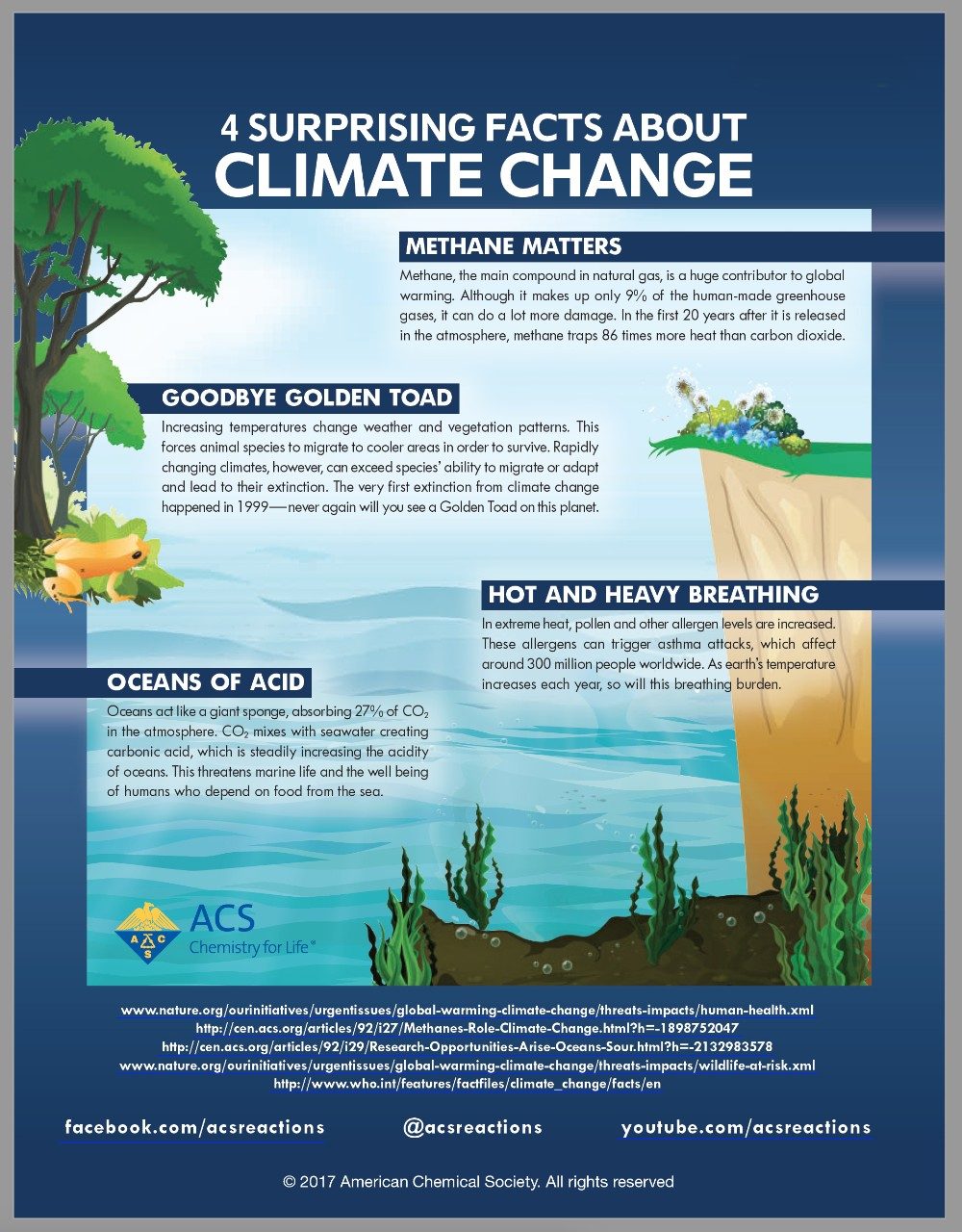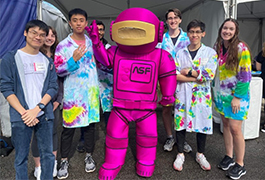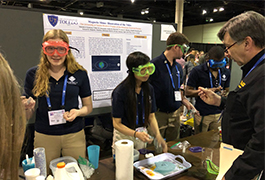To Convince Climate Change Skeptics, Use Facts and Finesse
What if your chapter was given the opportunity to present a documentary or give a speech to an audience on climate change — how amazing would that be? Or, what if you had the chance to speak about climate change and other media-covered science topics with peers, community members, or family? Such situations might be a little nerve-wracking, but they could still be life-changing opportunities. But how would you go about preparing? What strategies would you use to articulate your ideas? How would you deal with someone who challenged the reality of climate change?
In recent years, climate change has become the epicenter of much political and bioethical debate. The scientific community continues to urge leaders to draft policies aimed at guiding a more sustainable approach to addressing climate change. Yet, however robust these efforts may be, there are still individuals who are not aware of the reality of climate change and its present-day effects. Let’s explore a few ways to ensure that you can be more effective in communicating the impact of global climate change.
Communication strategies
The science behind climate is vast, and quite technical. However, as communicators, it is your duty to convert such technical material into simplified and relatable language. For instance, except for fellow scientists, hardly anyone will sit through a detailed discussion of complicated physical chemistry equations involving CO2. Thus, it is important to simplify your presentation — while keeping it interesting enough to capture the audience’s attention. Make your message interesting by using analogies, real-life examples, and basic statistics. Loretta J. Mickley, senior research fellow at Harvard University, says, “Students can use simple metaphors to describe the science of climate to others. For example, they can refer to the greenhouse gas CO2 as a ‘heavy blanket’ that cannot be peeled off easily.” Now that’s catchy!
A great content summary on climate change can be accessed using the ACS Climate Science Toolkit. The Union of Concerned Scientists and the American Association for the advancement of Science also have excellent materials available on their sites. But as good as these resources are, many people really aren’t interested in listening to general facts on climate change. Instead, people are more interested in hearing how climate change will affect them. Mention a rise in CO2 and global temperatures, and the response might be mediocre at best, but mention a rise in temperature that could affect agriculture, including the cost and availability of food, the frequency of extreme weather, and coastal flooding, and suddenly you’ve got their attention!
Thus, in communicating climate change, it is important to show that climate change is a present reality — and not merely something that might occur in the distant future. Focusing on the present helps to emphasize the urgency of climate change — and of policies that will slow its progression.
Another strategy you can use is to ask the audience what climate change effects they are aware of at present. Ask leading questions to get them to provide examples that are easily relatable. These might include the distinction between weather and climate; the increase in greenhouse gases in the atmosphere, especially CO2, that are due to human activities; the rapidly increasing (at least, on a geological timescale) average global temperatures caused by these gases; the consequent melting of ice all over the planet (glaciers, Arctic sea ice, and ice sheets on Greenland and Antarctica); and oceans becoming more acidic as extra CO2 dissolves, endangering sea life.
Follow up the discussion by asking whether all these changes have any common variables. Discuss how all these effects stem from a common cause — mainly, increasing levels of CO2 caused by the burning of fossil fuels for energy production and transportation. Finally, and most importantly, ask for some ideas on what people can do to help reduce the production of CO2 and other greenhouse gases — solutions such as an overall reduction in energy usage, recycling, and the use of alternative energy sources, such as solar energy.
It is important to note that these strategies are aimed at getting your audience involved and letting their ideas guide the direction of the discussion. This makes the discussion more personal and interesting to the audience — and not simply what you, the communicators, think is interesting. Senior ACS scientist Jerry Bell notes that “ideally, the communicators will be aware of their audiences’ ideologies before beginning the discussion and will take them into account. Even better, if communicators share those ideologies, there will be a more trusting and productive relationship from the start.”
What to emphasize
In the past, a common strategy was to scare people by talking about the impending doom that would befall them if something were not done to stop climate change. To some extent, this approach is still included in one form or another in the speeches of many advocates, some more openly than others. However, a more effective means would be to focus on the benefits of having a heathier climate, with less emphasis on doom. For example, you could emphasize the benefits to farmers, such as creating jobs and avoiding the costs of runaway climate change. This strategy is more productive and shows that by adopting green solutions, we can not only help our planet but also have a positive impact on our economy.
Bell adds, “Students are in a position to play the ‘future card’, since the majority of their lives lie in the future. If present levels of greenhouse gas emissions continue or are only modestly reduced, the changes already seen will be multiplied. The planet will be a much less hospitable place for the next generation. Is this the legacy the audience wants to leave its descendants?” This question is powerful and can lead people to question their actions in an ethical and emotionally provoking manner. However, Bell adds, “this kind of messaging has to be used with care and with consideration of how an audience will respond.” It can also be used to transition the conversation into asking the audience what personal actions they might adopt as part of a green initiative. This is a time to offer suggestions, such as driving less, changing home thermostats, making less carbon-generating food choices, and reducing waste in water.
Addressing skepticism
There are some people who are skeptical that climate change is real or that it poses a threat. When speaking to those who do not agree with the ideology of climate change, it is important to first understand their perspectives and how they arrived at their opinions. Encourage them to speak about their doubts, and listen and respond in a non-judgmental, neutral manner. We all have had doubts about something at one time or another — so take their skepticism seriously and respond with adequate facts from reliable and reputable sources. Mickley says, “Some people have a hard time accepting that the climate is changing and that human activity accounts for most of that change. Students in the sciences can begin to address this skepticism by arming themselves with details of the changes already observed in regional or global climate.” Facts are important, but as stated earlier, using examples illustrating the effects that are currently occurring will help to show that climate change is not simply an abstract theory.
To this end, always remember that while you are trying to communicate the fact that humans are the primary contributors to climate change — and the supposition that they can change its current trajectory — you must continue to respect other people’s beliefs, even if they are inaccurate. Over time, they may come to a more realistic assessment of the world we are creating. One place to get background information for responses to many of the climate change “myths” that confuse people is at www.skepticalscience.com.
Getting involved
The most important messages here are that individual actions are important, and we are all responsible. It is too easy to say and think that the problem of climate change is so huge that one’s own efforts are worthless. This is far from the truth. Although one person’s action has only a tiny effect, the sum of a group, state, or country’s effort will have an exponentially greater effect. Of course, if there is no action at all, there is zero effect. To create an even bigger impact, communicators must advocate voting. If the audience feels that climate change is a problem that requires society’s attention and action, then encourage voting for local, state, and nationally elected officials who share this belief and are willing to work toward finding greener solutions. Mickley notes that “one of the most important things a concerned citizen can do is vote! In my view, having government programs that will promote a shift toward greener technology is key to dealing with climate change.”
Additional websites for authoritative educational resources (videos, animations, lab exercises) regarding climate change can be found at CAMEL Climate Change Education and the Climate Literacy Education Network (CLEAN).






